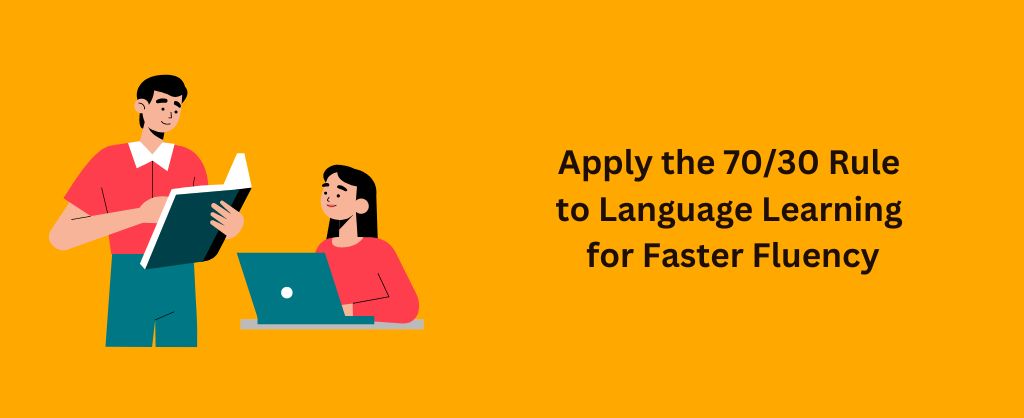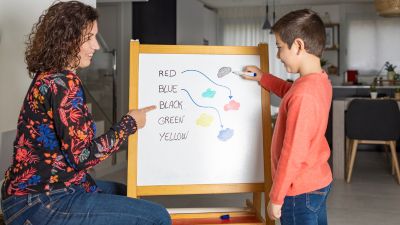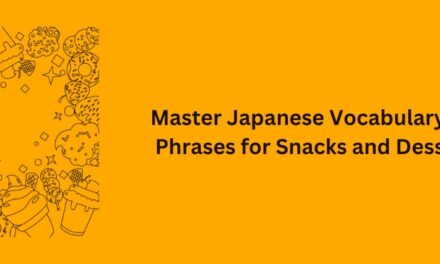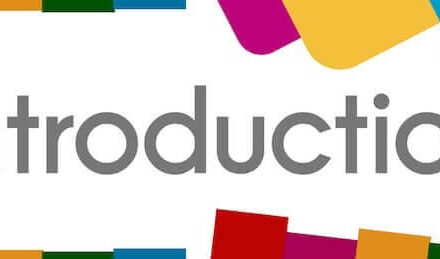How to Apply the 70/30 Rule to Language Learning for Faster Fluency

Want to become fluent in a new language quickly? The 70/30 rule may be the key. This simple technique balances focused study with real-world practice to speed up language acquisition.
The core idea is that you should spend 70% of your time immersed in the language, and 30% explicitly studying it. This split allows you to rapidly develop fluency, vocabulary, proper grammar, and accurate pronunciation simultaneously.
Read on to learn:
- How the 70/30 rule works
- Tips to apply it to your language learning
- Explanation of why it’s so effective
- Ideas for immersion and study activities
- How to adapt it to your own needs
Based on research in neuroscience and adult learning theory, the 70/30 rule helps your brain grasp patterns through natural exposure while also building knowledge of rules and structure.
Together, they work synergistically to boost your skills faster. Follow this simple blueprint to make rapid progress in any language you want to learn!
What Is the 70/30 Language Learning Rule?
The 70/30 rule states that adult language learners should spend:
- 70% of study time immersed in the language. This means surrounding yourself with it through activities like talking with native speakers, traveling abroad, watching TV shows, listening to music, reading books, etc.
- 30% of time in explicit study. During this focused portion, you actively study vocabulary, grammar rules, pronunciation patterns, etc. using tools like textbooks, flashcards, tutoring sessions, and language learning apps.
The logic is that real immersion mimics how we all learned our first language as children through constant exposure. Explicit study provides structure and feedback to accelerate the learning process in ways pure immersion can’t.
Balancing both parts allows you to develop implicit intuitions about the language naturally while also consciously acquiring knowledge about its formal rules and elements.
Why Is the 70/30 Rule Effective?
Decades of research has shown the 70/30 rule to be highly effective because it mirrors how the brain actually acquires languages:
- It combines natural, implicit learning through immersion with explicit “textbook” learning. This builds both unconscious acquisition and conscious knowledge.
- Mixing formal study with activities you find fun and engaging enhances motivation and interest, keeping you consistency.
- The high volume of comprehensible input helps you rapidly make connections and grasp patterns about the language.
- Starting to use the language regularly prevents you from overthinking and helps your brain get accustomed to real-time processing.
- Receiving feedback during study helps you identify weak areas and correct bad habits before they get ingrained.
- The dual approach provides diversity of input, allowing you to learn different aspects of the language faster.
Think of it this way – you acquire the language broad and build an intuitive feel through immersion, then refine and sharpen your skills through focused study.
Tips to Apply the 70/30 Rule
To apply the 70/30 rule effectively, keep these tips in mind:
- Customize the ratio to your own needs – 60/40 or 75/25 can also work well. Find the split that fits your learning style.
- Diversify immersion activities – The more variety, the better. Rotate through different listening, reading, writing and speaking activities.
- Include some study time daily – Even just 30 minutes of flashcards or a language app lesson will help.
- Create surround sound – Post labels around your home, listen to language tapes in the car, change device settings to the language.
- Set periodic language goals like giving a presentation in your target language. This provides motivation.
- Measure progress – Take proficiency benchmarks every few months to quantify your improvement.
- Make activities fun! – Choose immersion activities you find genuinely enjoyable, like travel or films.
The ideal ratio is unique for each learner. Experiment to find the right balance that keeps you progressing quickly but also engaged.
By following the 70/30 rule, you can optimize your language learning for speed and efficiency.
Here’s an in-depth look at how to apply the 70/30 rule to your language studies.
Choose Your Core Activities (70%)
The first step is to identify the key activities that will compose the bulk of your language learning routine. These are the high-frequency activities that get you using and engaging with the language as much as possible.
Here are some of the best core activities to spend most of your study time on:
- Listening: Listening to the spoken language trains your ear and helps internalize vocabulary, pronunciation, grammar patterns, etc. Spend lots of time listening to native audio through podcasts, music, movies, TV shows, or conversation partners.
- Speaking: Nothing gets you fluent faster than actually speaking the language consistently. Have regular conversations with native speakers via language exchange partners or tutors.
- Reading: Reading in the target language expands your vocabulary and exposes you to proper grammar and sentence structure. Read simple books, news articles, or anything with content suited to your level.
- Writing: Writing your own sentences and texts helps reinforce what you’re learning. Keep a journal in the target language or write social media posts to practice expressing yourself.
- Grammar/Vocabulary Drills: Focus on short, concentrated drills to build your grammar and vocab knowledge. Spaced repetition flashcards are especially effective.
Aim for at least 70% of your study schedule to revolve around the core activities above, prioritizing listening and speaking whenever possible.
The more active practice you get, the faster you’ll learn.
Add Supplementary Activities (30%)
After mapping out time for your essential language activities, the remaining 30% of your schedule can be used for secondary activities that, while beneficial, are considered less crucial for fast progress.
Here are some examples:
- Language Classes: Supplement self-study with weekly language classes to get structured lessons and feedback.
- Language Apps: App-based drills can be handy for practicing vocab and grammar on the go. Popular options include Duolingo, Babbel, Busuu, etc.
- Movies/TV: Passively watching shows in the target language exposes you to vocabulary in context. Use subtitles in that language as well.
- Music: Listening to music in that language reinforces pronunciation and helps with vocabulary acquisition.
- Books About Language Learning: Reading language learning theory can provide tips to study more efficiently.
- Travel: Immersing yourself in the native environment cements everything you’ve learned.
Spread these supplementary activities throughout your week, but keep them to about 30% of your total study schedule at most.
Adapting the 70/30 Rule to Your Needs
The 70/30 split is a general guideline – you should adapt it based on your own learning preferences:
- If you excel through classes, do more formal study and practice. But don’t go over 50/50, immersion is still vital.
- If you learn well through exposure, emphasize immersion activities even more, up to 80% of the time.
- If you are a visual learner, choose more reading/writing immersion activities.
- If you are an auditory learner, load up on podcasts, music, radio, conversations.
- If you struggle to stay motivated, pick only fun, engaging immersion activities that you look forward to.
- If you enjoy analyzing patterns, spend more time deliberately reviewing vocabulary lists or grammar rules.
- If you have little time to study, focus on simple immersion through audio tracks in the car or passive TV watching.
The ideal split depends on your learning style, schedule, ability to travel abroad, access to native speakers, and other factors.
The key is balancing meaningful immersion that you enjoy with structured study. Both parts work together to reinforce your knowledge and abilities from different angles.












